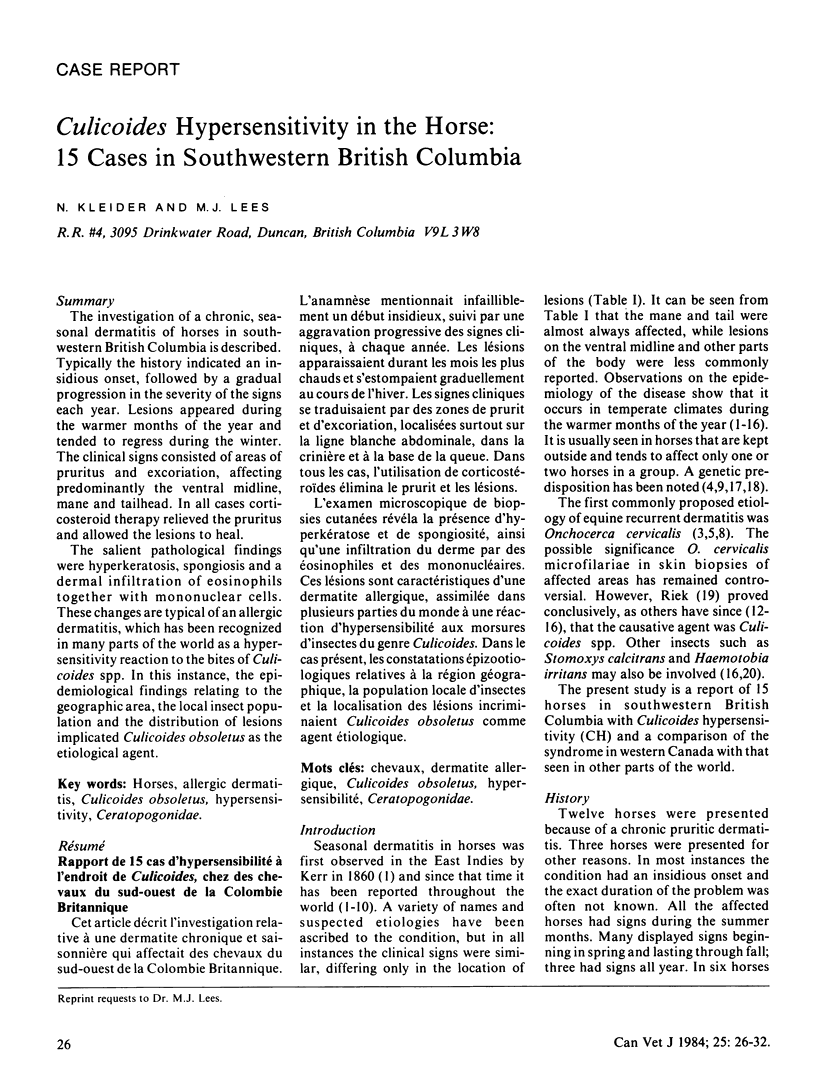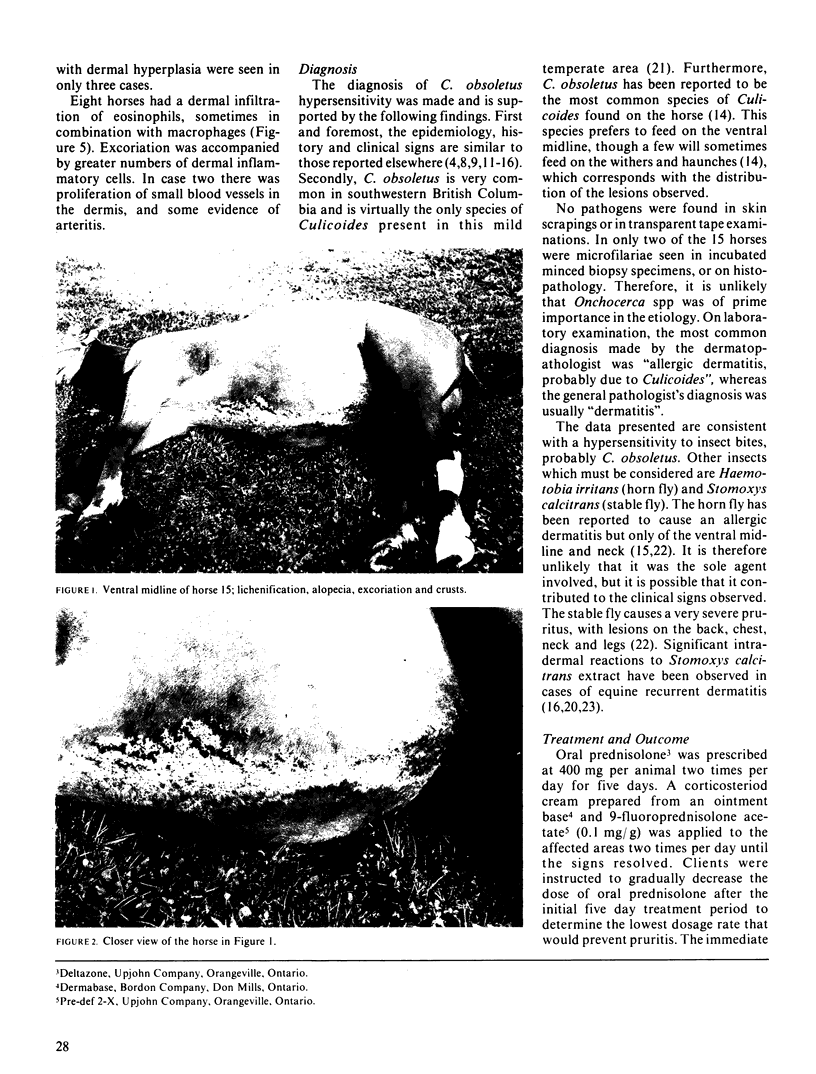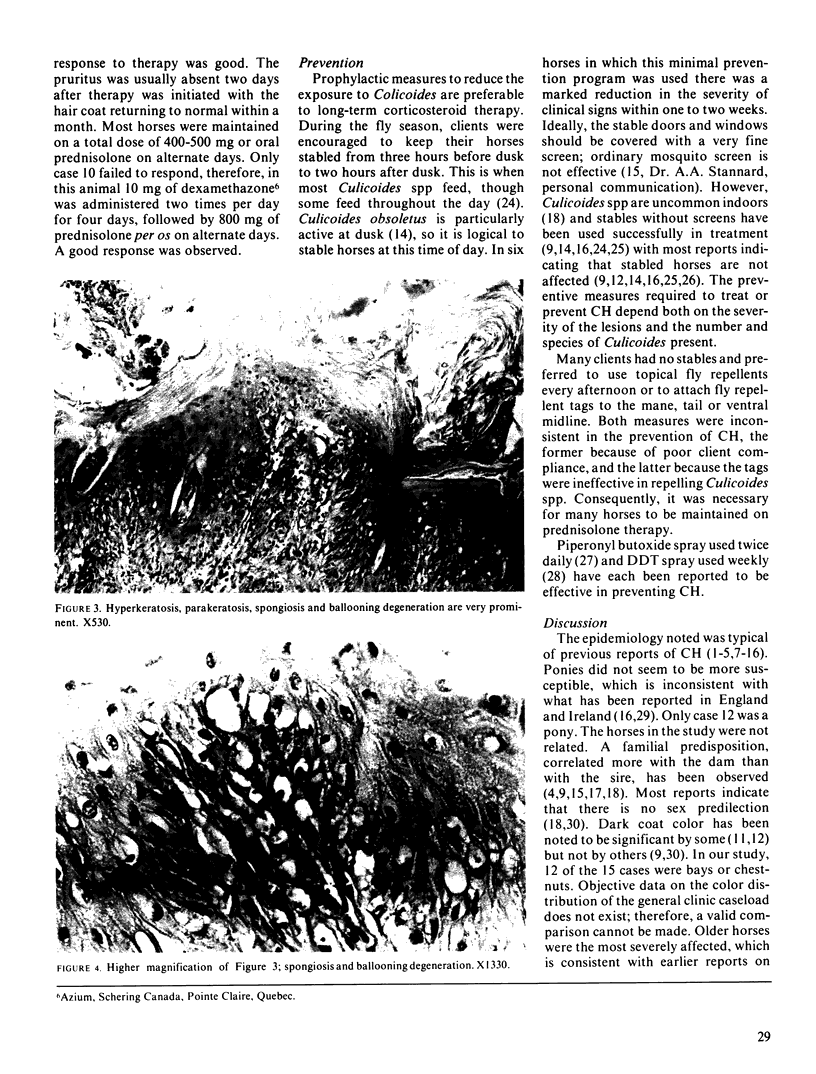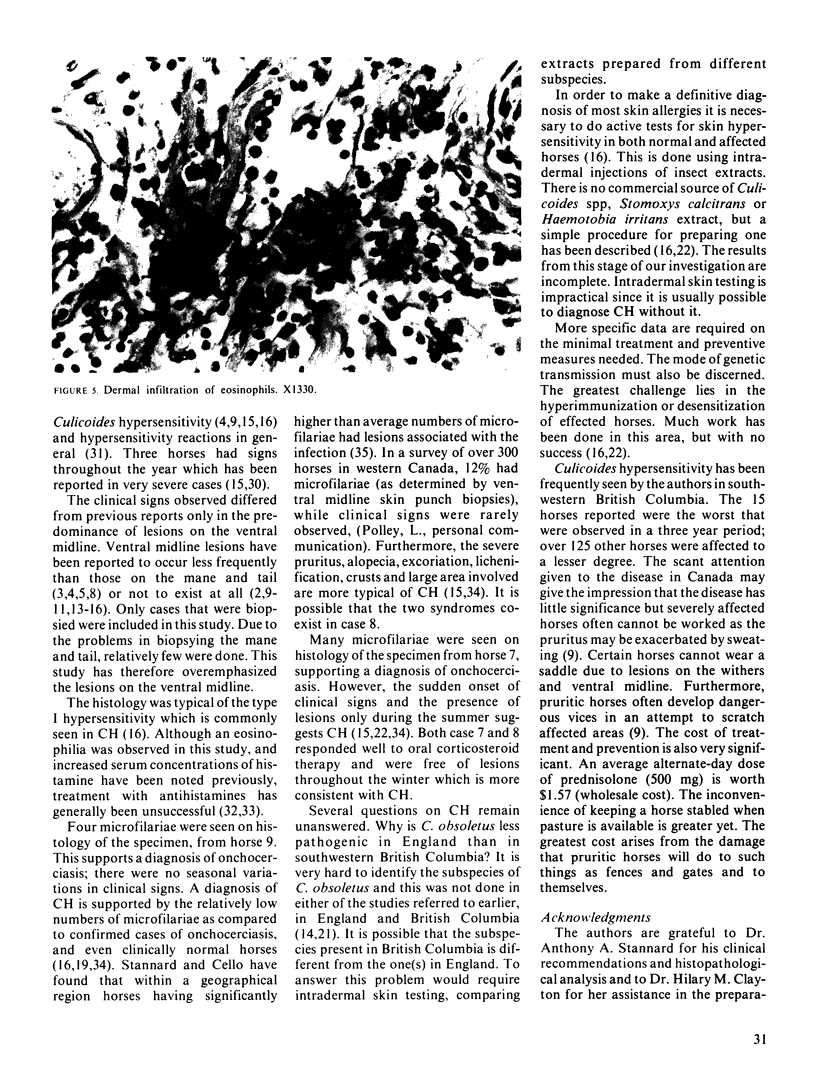Abstract
The investigation of a chronic, seasonal dermatitis of horses in southwestern British Columbia is described. Typically the history indicated an insidious onset, followed by a gradual progression in the severity of the signs each year. Lesions appeared during the warmer months of the year and tended to regress during the winter. The clinical signs consisted of areas of pruritus and excoriation, affecting predominantly the ventral midline, mane and tailhead. In all cases corticosteroid therapy relieved the pruritus and allowed the lesions to heal.
The salient pathological findings were hyperkeratosis, spongiosis and a dermal infiltration of eosinophils together with mononuclear cells. These changes are typical of an allergic dermatitis, which has been recognized in many parts of the world as a hypersensitivity reaction to the bites of Culicoides spp. In this instance, the epidemiological findings relating to the geographic area, the local insect population and the distribution of lesions implicated Culicoides obsoletus as the etiological agent.
Keywords: Horses, allergic dermatitis, Culicoides obsoletus, hypersensitivity, Ceratopogonidae
Full text
PDF






Images in this article
Selected References
These references are in PubMed. This may not be the complete list of references from this article.
- Baker K. P., Quinn P. J. A report on clinical aspects and histopathology of sweet itch. Equine Vet J. 1978 Oct;10(4):243–248. doi: 10.1111/j.2042-3306.1978.tb02271.x. [DOI] [PubMed] [Google Scholar]
- Lees M. J., Kleider N., Tuddenham T. J. Cutaneous onchocerciasis in the horse: five cases in southwestern british columbia. Can Vet J. 1983 Jan;24(1):3–5. [PMC free article] [PubMed] [Google Scholar]
- Mellor P. S., McCraig J. The probable cause of "sweet itch" in England. Vet Rec. 1974 Nov 2;95(18):411–415. doi: 10.1136/vr.95.18.411. [DOI] [PubMed] [Google Scholar]
- Stannard A. A., Cello R. M. Onchocerca cervicalis infection in horses from the western United States. Am J Vet Res. 1975 Jul;36(7):1029–1031. [PubMed] [Google Scholar]







